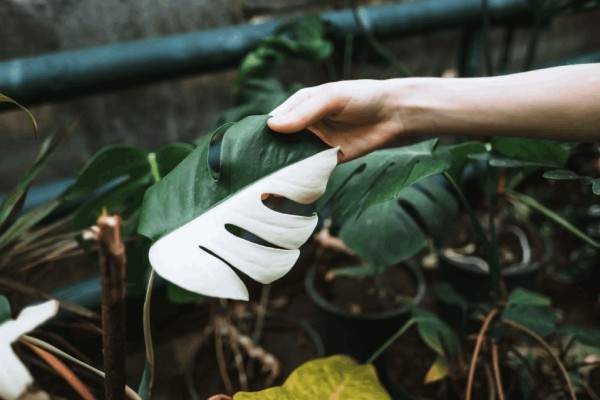Having variegated plants at home is one of the most beautiful and fascinating things you can do for decoration. There are lots of specimens available for our homes and gardens. Instead of colorful foliage, variegated plants have spots, splotches, stripes, or edges in at least one contrasting color.
While colorful houseplants can brighten against the usual foliage, variegated ornamental plants add interest to outdoor plantings.
What is plant variegation?
Variegated plants have green leaves patterned with shades of at least one contrasting color: white, yellow, pink, red, cream, or a combination. Some species of variegated plants like coleus and crotons have many other color combinations.
Plants can also have variegation in contrasting shades of green. The scientific names of the variegated plant are often called with the Latin word “variegata,” which means striped or marked with numerous colors.
How does plant variegation happen?
Genetic level is the main cause of variegation in plants. However, this phenomenon can also occur in some different ways.
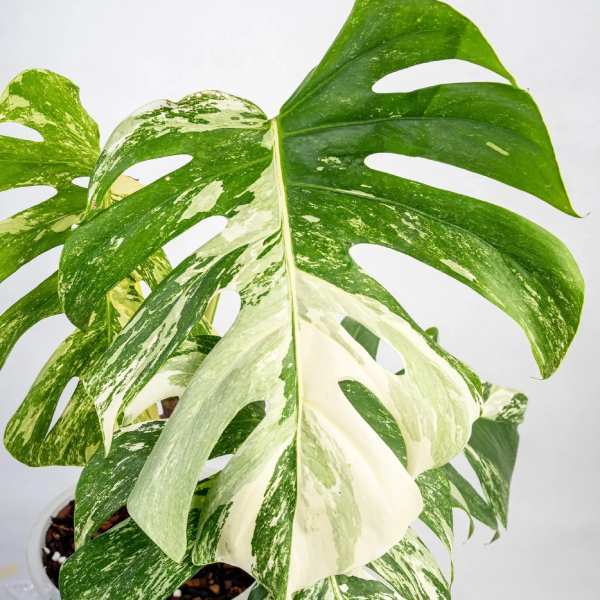
The colorful portions of the foliage get their contrasting shades since they don’t have the same chlorophyll that the green portions have. This means that the variegated plants normally require more light than other plants to maintain proper growth.
Types of variegated plants
It is safe to say that not all plant variegation happens in the same way. There are many types of plant variegation and not all of them are attractive. While some species are super easy to reproduce in plant propagations or divisions, others are difficult to control.
Natural variegation
Also known famously as the pattern-gene variegation, natural variegation happens at the level of a plant’s DNA. In simple words, the baby plants with this type of variegation will have similar traits to their parent plant.
Some also refer to these species or cultivars as stable since the variegation will be passed on to future generations. Remember that the natural variegation will happen naturally or as the result of breedings by humans.
Chimeral variegation
Unlike natural variegation, chimeral variegation happens by a random mutation that prevents only some parts of the plant tissue from producing the chlorophyll that is responsible for keeping the plants naturally green.
This is the most common variegated type. This results in plants whose leaves are splashed or splotched with shades of cream, green, yellow, or white.
This variegation can be unstable. That means the leaves can revert to a color in extreme conditions. Propagating with the same variegation as the plant plant is also difficult.
Also, Read What Is a Perennial? How to Choose and Care for Perennial Plants!
Blister variegation
This variegation mainly occurs because of the plant’s inability to produce chlorophyll but by air pockets that are created between the outer layers and inner pigmented layers of plant tissue. The result can be seen on leaves or even veins and stems of plants in lighter and contrasting shades.
Many people also refer to this variegation as reflective variegation due to the silvery quality that it gives to affected parts of a plant’s leaves.
Viral Variegation
Sometimes, variegations happen neither because of inherited traits nor chance mutations but because it is infected by a viral infection in the plant. Otherwise, the plant may be healthy or sustain damage from the infection.
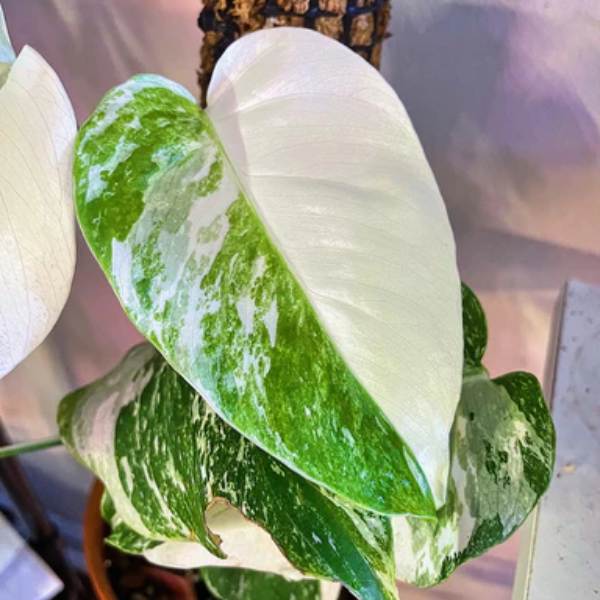
For instance, the tomato mosaic virus affects the tomato plants while damaging the leaves as well. It does so by creating a mottled appearance on leaves. Hosta virus x disease affects the foliage of hostas.
This virus makes plants unattractive and can damage the overall plant health. So, it is better to normally remove and trash the plants as early as possible when you identify the symptoms.
Plants that have variegated leaves
There are thousands of variegated plant species and cultivars in existence. Some of them are popular houseplants, ornamental plants, and even shrubs and trees. These beautiful plants can add a pop of color and visual interest to any garden, landscape, or houseplant collection. Some of them are listed below:
Pink princess philodendron
One of the most popular variegated plants over the past few years has to be the pink princess philodendron. This stunning, self-heading philodendron has large, heart-shaped leaves that are patterned with splotches and spots of pink over burgundy or deep green leaves.
Philodendrons are great houseplants because of their easy propagation and care instructions. Just plant your philodendron plant in a pot with well-draining soil and partial light to watch it thrive.
Thai constellation monstera
The most sought-after variegated plant is the Thai constellation monstera which is popular for its large, fenestrated leaves featuring random patches and tiny speckles of pale green, cream, or yellow.
The reason why these majestic specimens can be difficult to find and are expensive is because the propagation of new plants that offer the exact attractive variegation as the mother plant is a difficult task.
Ficus triangularis:
This species is a sturdy variegated plant with thick and waxy leaves. Over time, the small plant will grow into a blooming tree, so this variegated plant is best fit for larger outdoor spaces. It also requires minimal maintenance, as it needs little water and doesn’t need pruning.
Variegated pothos
If you’re planning to add some variegation to your houseplant collection but don’t know where to start, there are a dozen varieties of pothos collection that have variegated leaves. These super easy-to-care-for plants are beginner-friendly and look pretty as they trail from hanging baskets.
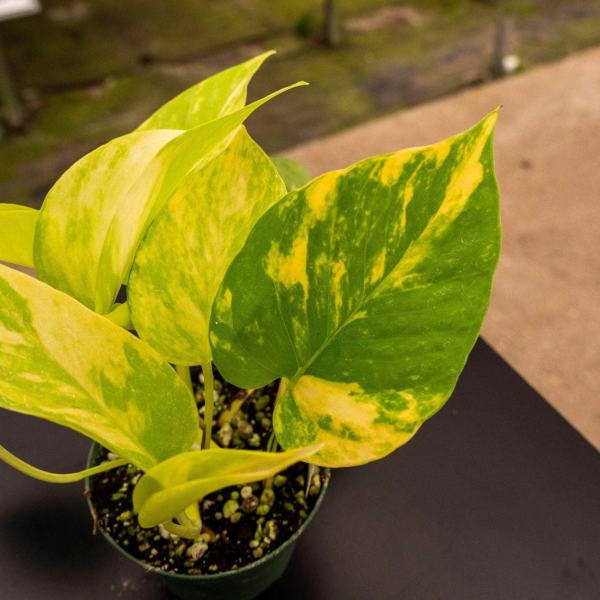
Domino peace lily
Peace lilies are popular for their hardiness, adaptability, and lovely white flowers. While the Domino cultivar offers these benefits, variegated peace lilies normally need some more light to stay healthy and keep their variegation looking bright and lively.
Ficus Ruby
Another easy variegated plant is the ficus ruby which is the variegated rubber tree plant. This plant has wide, shiny leaves with irregular areas of cream, pale green, and pink patches. This fast-growing variety can reach up to 6 to 10 feet tall indoors when matured, making it an eye-catching statement plant.
Peperomia
Peperomia makes leaves in a variety of colors, from red to purple. Some of its varieties like the Peperomia caperata even bloom white flowers among their variegated leaves. These plants are slow growers but they require minimum care.
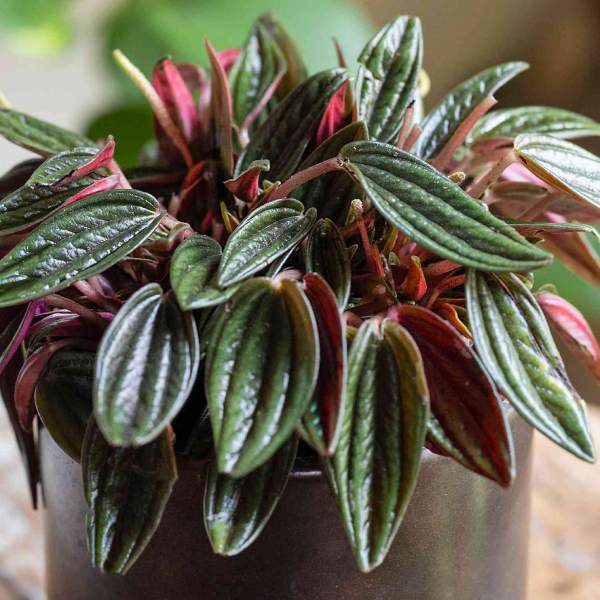
Monstera deliciosa ‘Albo Variegata’
The monstera deliciosa is a variegated species of tropical plant native to Mexico and Panama. Also known as the Swiss cheese plant, this type of variegated plant produces large, heart-shaped leaves that can grow thirty inches long. It is a great indoor plant option. You must provide indirect sunlight for this plant to be healthy.
How to encourage plant variegation
- Provide variegated plants more light than non-variegated ones
As mentioned earlier, these plants naturally have low chlorophyll (or, in the case of blister variegation, there’s an air pocket between the chlorophyll and the leaf surface), variegated plants require more light to prepare food and just thrive. Providing these plants with enough indirect bright light can keep their variegated colors looking strong and bright.
- Protect variegated plants from stress
Certain problems like sudden temperature changes, repotting, relocating, low light, underwatering, or humidity loss can cause stress to your plants. If that’s the case, it can even cause the variegated plants to revert or their variegation as a result. So, it is essential to pay special attention to the plant’s specific care and conditions to make it happy and stress-free.
- Prune away non-variegated foliage
Pruning can encourage new, variegated growth of the plants by removing away the non-variegated leaves. If you just let them be, they may grow larger and be more prominent than the variegated leaves which will not be able to absorb enough sunlight, causing the plant to lose all its overall variegated look.
FAQs
Q: Is variegation good for plants?
A: Variegation is neither good nor bad for plants (unless it’s caused by a virus). If caused naturally, there is nothing right or wrong to say. However because the lack of chlorophyll affects their ability to make food from sunlight, variegated plants may grow more slowly than non-variegated plants or have a shorter lifespan.
Q: Can you force plant variegation?
A: No. It’s not possible to force a plant to become variegated. However, you can increase the likelihood that propagations from variegated plants will stay variegated by using a stem or leaf with variegation rather than one that’s completely green.
Q: Can you reverse plant variegation?
A: It’s possible for variegated plants to revert, or lose their special coloring and go back to green. Lack of light and stress are two factors that will make this more likely.
Also, Read A Complete Guide to Grow and Care for Hens and Chicks Plants
